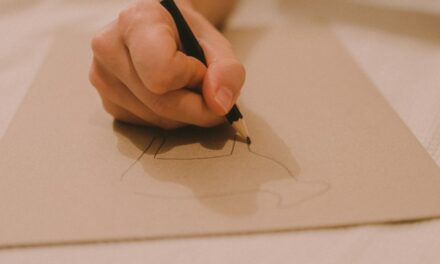Champlevé, a term derived from the French words meaning “raised field,” is an ancient enamelling technique that has captivated artisans and collectors alike for centuries. Its origins can be traced back to the early medieval period, particularly in the regions of France and the Byzantine Empire. The technique gained prominence during the 12th century, when it was employed to create intricate decorative pieces for religious and secular purposes.
The process involves carving or etching designs into a metal surface, typically copper or bronze, and then filling these recesses with enamel. This method not only allowed for vibrant colour contrasts but also provided a durable finish that could withstand the test of time. As a result, champlevé became a popular choice for ecclesiastical items, such as altar pieces and reliquaries, as well as personal adornments like brooches and pendants.
Throughout the centuries, champlevé has evolved, influenced by various cultural and artistic movements. In the Middle Ages, it was often associated with Gothic art, characterised by its elaborate designs and rich colours. The Renaissance period saw a resurgence of interest in classical themes, which led to a revival of champlevé techniques, as artisans sought to blend traditional craftsmanship with contemporary aesthetics.
By the 19th century, the technique had found its way into the Art Nouveau movement, where it was embraced for its organic forms and intricate patterns. Today, champlevé is celebrated not only for its historical significance but also for its unique ability to merge artistry with functionality, making it a cherished medium among modern artisans.
Summary
- Champlevé originated in the early Middle Ages as a decorative technique for metalwork, particularly in the production of religious objects.
- The materials and tools required for Champlevé include metal (usually copper or bronze), enamel, a kiln, and various engraving and polishing tools.
- Creating a Champlevé piece involves engraving a design onto a metal surface, filling the recessed areas with enamel, and then firing the piece in a kiln to fuse the enamel to the metal.
- Techniques for enamel application in Champlevé include using a fine brush to carefully apply the enamel into the engraved areas, as well as using a sifting method for larger areas.
- Design and patterns in Champlevé often feature intricate geometric shapes, floral motifs, and religious symbols, with the use of vibrant colours to enhance the visual impact of the piece.
Materials and Tools for Champlevé
Materials Used in Champlevé Art
The creation of champlevé art necessitates a specific set of materials and tools that are essential for achieving the desired results. The primary material used in this technique is metal, with copper being the most common choice due to its malleability and excellent conductivity. Other metals such as bronze and silver are also used, depending on the desired aesthetic and durability of the final piece.
The Importance of Enamel in Champlevé Art
The choice of metal significantly influences the overall appearance of the champlevé work, as different metals react uniquely to the enamelling process. Additionally, the enamel itself is a crucial component; it is typically made from finely ground glass mixed with various oxides to produce a wide range of colours. The quality of the enamel can greatly affect the vibrancy and longevity of the finished piece.
Specialised Tools for Champlevé Art
In terms of tools, artisans require a variety of specialised instruments to execute the champlevé technique effectively. A graver or burin is essential for carving the designs into the metal surface, allowing for precision and detail in the patterns created. Other tools include chisels for deeper cuts and files for smoothing edges.
The Firing and Finishing Process
Once the design is etched, a kiln is necessary for firing the enamel; this high-temperature oven ensures that the enamel fuses properly with the metal. Additionally, tools such as brushes and spatulas are used for applying the enamel into the carved recesses. Each tool plays a vital role in the process, and mastery of these instruments is crucial for any artisan looking to create exquisite champlevé pieces.
The Process of Creating a Champlevé Piece

Creating a champlevé piece is a meticulous process that requires both skill and patience. The first step involves designing the artwork, which can range from simple geometric patterns to intricate scenes depicting historical or religious narratives. Once the design is finalised, it is transferred onto the metal surface, typically through tracing or direct engraving.
The artisan then uses a graver to carve out the outlined areas, creating depressions that will later be filled with enamel. This stage is critical, as the depth and precision of these carvings will determine how well the enamel adheres and how vibrant the final colours will appear. After carving, the next phase involves cleaning the metal surface to remove any debris or oils that could interfere with adhesion.
Once cleaned, the artisan carefully applies enamel into each carved section using a small brush or spatula. This requires a steady hand and an eye for detail, as uneven application can lead to unsightly results once fired. After filling all sections with enamel, the piece is placed in a kiln where it undergoes firing at high temperatures.
This process causes the enamel to melt and fuse with the metal, creating a smooth and glossy finish. Once cooled, any excess enamel is ground down to ensure a level surface before moving on to polishing and finishing touches.
Techniques for Enamel Application
The application of enamel in champlevé art is an intricate process that demands both precision and creativity. One common technique involves layering different colours of enamel within the carved sections to create depth and complexity in the design. Artisans often experiment with various colour combinations to achieve unique effects; for instance, layering transparent enamels over opaque ones can produce stunning visual contrasts that enhance the overall aesthetic appeal of the piece.
Additionally, some artisans employ techniques such as sgraffito, where they scratch through a layer of enamel to reveal underlying colours or patterns, adding another dimension to their work. Another important aspect of enamel application is controlling the firing temperature and duration during kiln processing. Different types of enamel have varying melting points; thus, artisans must be adept at adjusting their firing techniques accordingly to prevent burning or bubbling of the enamel.
Some may choose to fire their pieces multiple times, applying additional layers of enamel after each firing to build up colour intensity or add intricate details. This layering technique not only enriches the visual texture but also allows for greater artistic expression within each piece. Mastery of these application techniques is essential for any champlevé artisan aiming to create works that are both visually striking and technically sound.
Design and Patterns in Champlevé
The design elements in champlevé are as diverse as they are captivating, reflecting a rich tapestry of cultural influences throughout history. Traditional motifs often draw inspiration from nature, religious iconography, or geometric patterns that resonate with specific cultural narratives. For instance, many medieval champlevé pieces feature intricate floral designs or depictions of saints that were intended to convey spiritual significance.
These designs not only served an aesthetic purpose but also functioned as storytelling devices that communicated important themes within their respective cultures. In contemporary champlevé art, designers continue to push boundaries by incorporating modern themes and abstract concepts into their work. This evolution has led to an exciting fusion of traditional techniques with innovative design approaches that challenge conventional aesthetics.
Artists may experiment with asymmetrical patterns or bold colour palettes that reflect current trends while still honouring the historical roots of champlevé. The versatility of this medium allows artisans to explore personal expression while maintaining a connection to its rich heritage, resulting in pieces that are both timeless and relevant in today’s artistic landscape.
Finishing and Polishing a Champlevé Piece

Grinding Down Excess Enamel
This process typically begins with grinding down any excess enamel that may have overflowed from the carved sections during firing. Artisans use specialised grinding wheels or files to achieve a smooth surface that not only looks polished but also ensures that all elements are level and cohesive.
Polishing for a Lustrous Finish
Following grinding, polishing becomes essential for achieving that lustrous finish characteristic of high-quality champlevé work. Artisans often employ various polishing compounds along with soft cloths or wheels to buff the surface gently without damaging the enamel beneath. This step not only enhances visual appeal but also protects against tarnishing or scratching over time.
Adding the Finishing Touches
In some cases, artisans may apply a protective coating or wax to further safeguard their creations from environmental factors. The finishing touches transform a raw piece into a refined work of art, showcasing both craftsmanship and artistic vision.
Common Uses for Champlevé Art
Champlevé art has historically been employed in various forms, serving both functional and decorative purposes across cultures. One of its most prominent uses has been in ecclesiastical items such as chalices, altar frontals, and reliquaries—objects designed for religious ceremonies that required both beauty and durability. These pieces often featured intricate designs that conveyed spiritual narratives or symbolised divine attributes, making them integral components of worship practices throughout history.
The vibrant colours achieved through champlevé enamelling added an element of splendour to these sacred objects, enhancing their significance within religious contexts. In addition to religious artefacts, champlevé has found its way into personal adornments such as jewellery and decorative boxes. Brooches, pendants, and cufflinks crafted using this technique often showcase elaborate designs that reflect individual style while maintaining cultural heritage.
Furthermore, contemporary artisans have expanded upon traditional uses by creating functional items like home décor pieces—such as wall hangings or decorative plates—that incorporate champlevé techniques into modern design aesthetics. This versatility ensures that champlevé remains relevant in today’s artistic landscape while continuing to celebrate its rich historical roots.
Contemporary Applications of Champlevé
In recent years, there has been a resurgence of interest in traditional crafts like champlevé as contemporary artists seek to revive age-old techniques while infusing them with modern sensibilities. Many artisans are now experimenting with innovative materials alongside traditional metals and enamels—such as incorporating resin or glass elements—to create hybrid pieces that challenge conventional definitions of champlevé art. This blending of materials not only expands creative possibilities but also allows artists to explore new textures and forms within their work.
Moreover, educational initiatives aimed at preserving traditional crafts have emerged globally, encouraging new generations of artisans to learn about champlevé techniques through workshops and mentorship programmes. These efforts ensure that this ancient art form continues to thrive in contemporary society while fostering appreciation for its historical significance. As artists push boundaries through experimentation while honouring traditional methods, champlevé remains an enduring testament to human creativity—a bridge between past craftsmanship and future innovation in art.
For those intrigued by the Champlevé technique and eager to explore more about diverse art styles, a recommended read would be An Introduction to the Realism Art Movement. This article delves into the Realism movement, which, like Champlevé, offers a unique perspective on artistic expression, focusing on depicting subjects as they appear in everyday life without embellishment or interpretation. Understanding Realism can provide a broader context to the historical and stylistic shifts in art, complementing your knowledge of specific techniques such as Champlevé.




